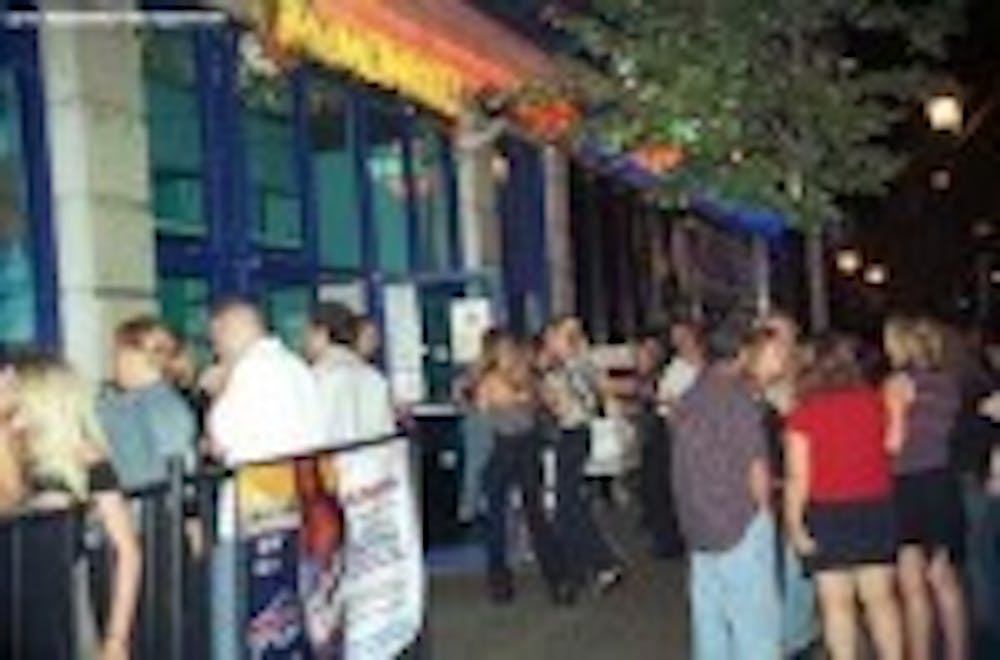A tall, leggy blonde wearing low-slung jeans, a sparkly halter and black heels swivels out of her barstool at Soho on Chippewa Street. She slowly makes her way through the packed crowd, drink in hand, as far away from the speakers blaring '80s music as she can manage.
"My friends and I usually end up here after Thursday in the Square," said Christine Johnston, 28, of North Tonawanda. "It's where pretty much everybody ends up after Thursday in the Square."
This Thursday is no different.
Music and laughter spill out onto Chippewa Street, and the crowds on the sidewalk are four feet deep. Since it is still Bike Week, Harleys of all kinds line the road, gleaming under the streetlights. Chippewa, as usual, is alive.
But it wasn't always this way.
"What you see here tonight is totally different than what it was in the '70s and '80s," said Paul Chiarello, 59, of Buffalo.
Thirty years ago, Chippewa was Buffalo's own red light district. It was a hotbed for crime, especially prostitution. Those businesses that weren't abandoned and boarded up sold pornography, pawned stolen items, rented rooms by the hour, or offered go-go dancers, strippers and burlesque shows.
Where Soho now thrives once stood a bar called the Fisherman's Wharf. According to Benny Timineri, now a doorman for The Crocodile Bar, the Wharf was more than just a seedy place. It was the worst of the worst.
"You took your life into your own hands going into that place," he said. "You would get drunk, come out, and there would be pickpockets and pimps waiting in every single alley, every doorway."
He says people avoided Chippewa Street at all costs.
"People didn't even want to drive through here at that time. They were afraid," he said.
Many people credit Chippewa's present incarnation to a visionary named Mark Goldman. Goldman bought the Calumet building (now housing Bacchus) on the corner of Chippewa and Franklin Streets. He completely restored it by hand and opened it as a jazz club, art gallery and restaurant in 1990.
His son, Charlie Goldman, 31, was at his side through the whole process.
"My dad is always thinking, always dreaming. We wanted to do something that promoted the arts," he said. "We wanted to bring art, food, music and life to a beautiful street that was basically dead."
He says he knew they had succeeded when other businesses started to follow.
"We were making a living for ourselves when we were all alone on the street," he said. "But other people started investing, buildings were going up and being refurbished. There are now 28 places where there were none."
Though Chippewa's rebirth has given hope to the city, it is not exactly what the Goldman's originally envisioned.
"We dreamed of a more diverse business atmosphere. We wanted to create a neighborhood. We wanted a street with a tailor, a drycleaner, a supermarket. We wanted people to live here. Chippewa has a very narrow appeal - it's just nightclubs and bars," he said. "For people my age and older there's really no reason to come down here."
Russell Nigrelli might beg to differ.
His family owned Tom's Produce Market on Chippewa and Ellicott Streets in the '30s during Chippewa's golden age. Nigrelli, 79, is glad to have his street back, and makes it down to Chippewa quite often.
On this night, he's relaxing on the Starbucks patio with a group of friends. Among them are a former member of the legislature, James Arcadi and the former chief of detectives for the Erie County Sheriff's Department, Peter Scaccia. They exchange stories about the old neighborhood, some good and some bad.
Nigrelli remembers strip malls opening and white people fleeing to the suburbs, which spelled the end for his market. Scaccia remembers collaborating with the Buffalo police to organize drug busts on the street. Timineri remembers asking for a tattoo of a skull at Dirty Dick's tattoo parlor and waking up with one of a Chihuahua instead.
"But you can't look back. That's all in the past," Nigrelli said.
He leans back in his chair and watches the multitude bustle past.
"Buffalo is its people. I've seen this city grow and diminish and grow again," he said. "You have to credit Mr. Goldman and all the people on this street. They're keeping it alive and it is flourishing."





